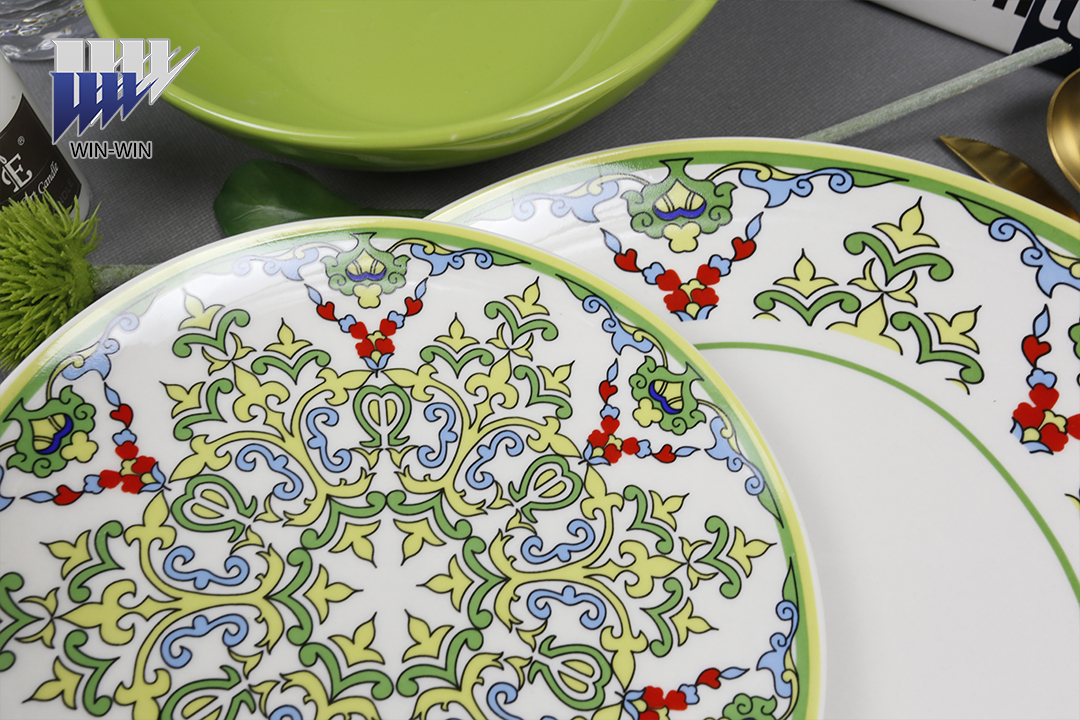The phenomenon that part or all of bone china cup products are black and gray is called smoke. This defect is due to incomplete oxidation or premature reduction of the green body, so that the carbon organic matter and low-temperature carbon deposits in the green body are not burned out, but are sealed by the glaze layer, and the surface of the product is gray. Factors that affect smoking are:
1. In the oxidation stage of low-fire and medium-fire heat preservation, the oxidation is incomplete, and some carbon remains in the green body, so that the cross-section of the green body is gray-black, especially when clay containing a large amount of carbon such as coal gangue is used in the billet. At the same time, the carbon in the body should be fully oxidized before the glaze layer is melted. For products that do not contain carbon in the billet, oxidation should also be strengthened during the medium-fire heat preservation stage, and special attention should be paid to coal-fired intermittent kiln and thick tire products. This is because of the intermittent kiln, when the kiln is ignited, the temperature in the kiln is low and there is a lot of water vapor. In addition, the temperature of the flue gas is low at this time, and the chimney suction is weak. In the short period of time when coal is added and the furnace is pried, the nature of the flame in the kiln is a reducing atmosphere. , At this time, not only the carbon inside the green body cannot be removed, but also the carbon will be deposited on the green body, especially when the moisture content of the green body is high, it is easier to make the product black. Therefore, during the medium-fire heat preservation stage (generally between 1000 and 1100 °C), a strong oxidizing atmosphere should be maintained and there should be sufficient heat preservation time. That is to say, in the kiln firing operation, the thickness of the ash layer, fire layer and coal layer on the grate should be controlled to ensure good ventilation, a large excess air coefficient, a clear fire layer in the combustion chamber, and the coal added every time must be burned thoroughly. , so that the body can be fully oxidized. Otherwise, the amount of coal added at this time is too much, the ash layer is too thick, the ventilation under the furnace bar is poor, and the combustion is impenetrable. The porosity of the body is the largest, the adsorption is strong, and it is easy to absorb the flue gas, resulting in carbon deposition.
2. In the later stage of the reduction stage, the reducing atmosphere is too thick, that is, after the glaze has been melted, the kiln still maintains a strong reducing atmosphere, but does not turn into a weak reducing or neutral atmosphere in time, and the product is still in the reducing atmosphere. The CO decomposes at high temperature to form carbon on the surface of the object, especially when calcium glaze is used, because the carbon absorption phenomenon of CaO is more serious, and it is most likely to form glaze smoke.
3. The glaze formula is unreasonable. For example, excessive CaO or other fluxes are used to cause the liquid phase and melting of the glaze prematurely, and the vitrification range is too narrow, so that the deposited carbon cannot be burned out in time, or the temperature difference of the kiln is too large , can not guarantee the change of the product atmosphere, so that some products are in a chaotic atmosphere or the fuel contains too much sulfur, and the sulfur-containing gas stays in the kiln for too long, the sulfur will strongly capture the oxygen in the flue gas, making the reducing atmosphere thicker , prone to smoke defects.
Post time: Feb-09-2023







